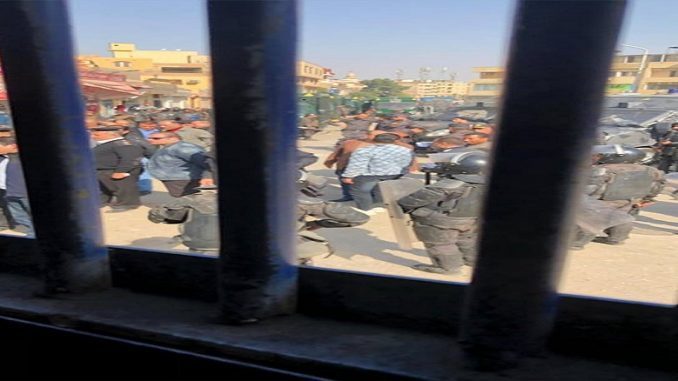
Egyptian security officials say police have arrested 24 people who tried to prevent authorities from demolishing buildings near the Giza pyramids.
They say police used tear gas to disperse residents and shopkeepers in the Nazlet el-Samman village on Monday after they scuffled with police escorting the demolition workers.
The officials spoke on condition of anonymity because they were not authorized to brief the media.
Monday’s violence follows a recent announcement that a private Egyptian company will take charge of running the historical site that includes the Great Pyramid and the Sphinx, which are visited by millions every year.
Egyptian authorities demolished two properties in a neighborhood of Cairo on Monday, in a case that has highlighted the issue of informal areas in the Egyptian capital and the peculiar history of the pro-government neighborhood.
The inhabitants of Nazlet El-Samman protested fearing that their community would meet the same fate as al-Warraq and Maspero.
These two Cairo neighbourhoods were demolished in 2016 to make way for a private investment project, with Egyptian authorities compensating the inhabitants of Warraq and Maspero below the market value for their properties.
The neighborhood of Nazlet El-Samman has an area of 252 Feddan (106 Hectares or 1.06 sq. km) with 48,300 residents (2006 Census). It is a low-income area whose inhabitants work mainly in the tourism sector, offering services such as horse and camel riding to tourists on the Pyramids’ Plateau.
Around 85% of the neighborhood consists of residential buildings, whereas 8% are bazaars, selling Egyptian souvenirs which are run by the locals and clustered around Abu-Alhoul touristic axis. Services make up 7% of the land use.
There are sixty stables, with 3500 residents working the horse riding and camel riding business. (General Organization of Physical Planning 2011). In addition to bazaars and stables, local shops and services can be found.
In 2000, the Egyptian government built a wall to stop any expansion of Nazlet El-Samman from infringing on the site of the pyramids. The wall affected residents’ business, as it prevented tourists from accessing the neighbourhood.
In February 2011, horse and camel owners of Nazlet El-Samman were mobilized by then-President Hosni Mubarak and launched an assault against protesters in Tahrir Square calling for regime change.
The events of 2 February 2011, now widely known in Egypt as the Battle of the Camel, occurred days before Mubarak stepped down.
One of Nazlet al-Samman’s inhabitants whose home was demolished on Monday said she and her family were supporters for Abdel Fattah al-Sisi and that she “cursed the Muslim Brotherhood and supported the regime” – but added that she now had nowhere to go.
Almost 70 percent of Cairo’s 20-million strong population live in areas that have been developed informally or extra-legally since 1960.



